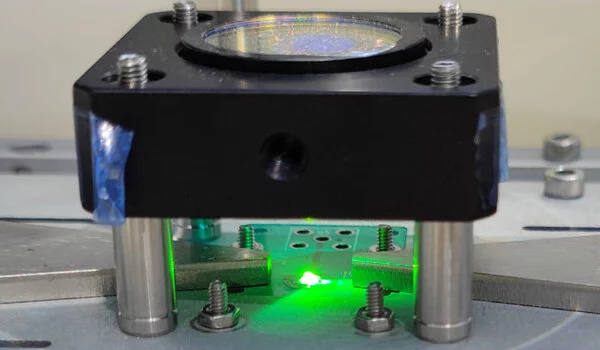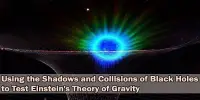A new take on highly sensitive magnetic field sensors ditches the power-hungry lasers that previous devices have relied on to make their measurements and replaces them with sunlight. Lasers can gobble 100 watts or so of power — like keeping a bright lightbulb burning. The innovation potentially untethers quantum sensors from that energy need. The result is an environmentally friendly prototype on the forefront of technology, researchers report in an upcoming issue of Physical Review X Energy.
The big twist is in how the device uses sunlight. It doesn’t use solar cells to convert light into electricity. Instead, the sunlight does the job of the laser’s light, says Jiangfeng Du, a physicist at the University of Science and Technology of China in Hefei.
Quantum magnetometers often include a powerful green laser to measure magnetic fields. The laser shines on a diamond that contains atomic defects. The defects result when nitrogen atoms replace some of the carbon atoms that pure diamonds are made of. The green laser causes the nitrogen defects to fluoresce, emitting red light with an intensity that depends on the strength of the surrounding magnetic fields.
I’ve never seen any other reports that connect solar research to quantum technologies. It might well ignite a spark of interest in this unexplored direction, and we could see more interdisciplinary research in the field of energy.”
Yen-Hung Lin
The new quantum sensor needs green light too. There’s plenty of that in sunlight, as seen in the green wavelengths reflected from tree leaves and grass. To collect enough of it to run their magnetometer, Du and colleagues replaced the laser with a lens 15 centimeters across to gather sunlight. They then filtered the light to remove all colors but green and focused it on a diamond with nitrogen atom defects. The result is red fluorescence that reveals magnetic field strengths just as laser-equipped magnetometers do.
Changing energy from one type to another, as happens when solar cells collect light and produce electricity, is an inherently inefficient process. The researchers claim that avoiding the conversion of sunlight to electricity to run lasers makes their approach three times more efficient than would be possible with solar cells powering lasers.

“I’ve never seen any other reports that connect solar research to quantum technologies,” says Yen-Hung Lin, a physicist at the University of Oxford who was not involved with the study. “It might well ignite a spark of interest in this unexplored direction, and we could see more interdisciplinary research in the field of energy.”
Quantum devices sensitive to other things, like electric fields or pressure, could also benefit from the sunlight-driven approach, the researchers say. In particular, space-based quantum technology might use the intense sunlight available outside Earth’s atmosphere to provide light tailored for quantum sensors. The remaining light, in wavelengths that the quantum sensors don’t use, could be relegated to solar cells that power electronics to process the quantum signals.
The sunlight-driven magnetometer is just a first step in the melding of quantum and environmentally sustainable technology. “In the current state, this device is primarily for developmental purposes,” Du says. “We expect that the devices will be used for practical purposes. But there [is] lots of work to be done.”
















